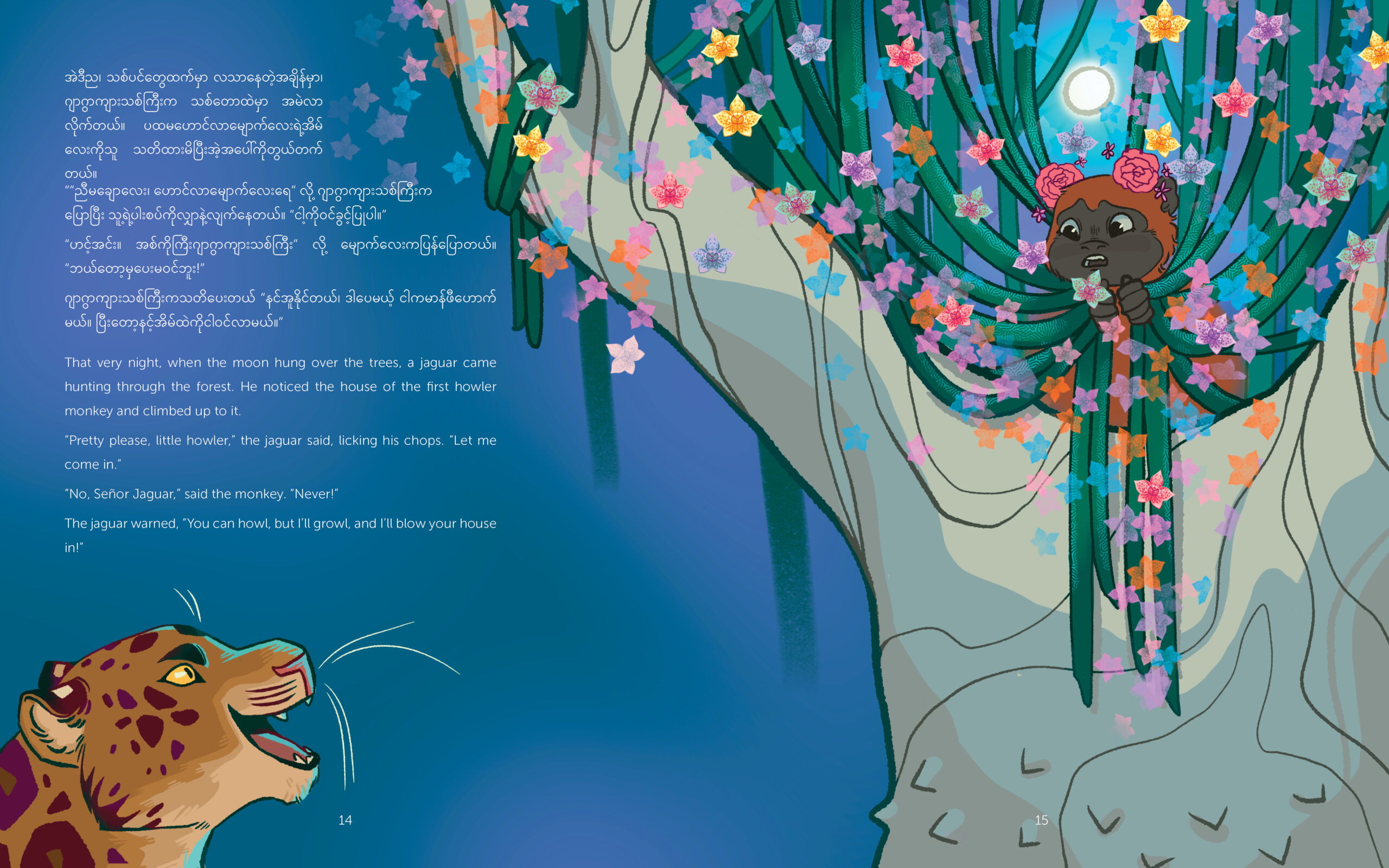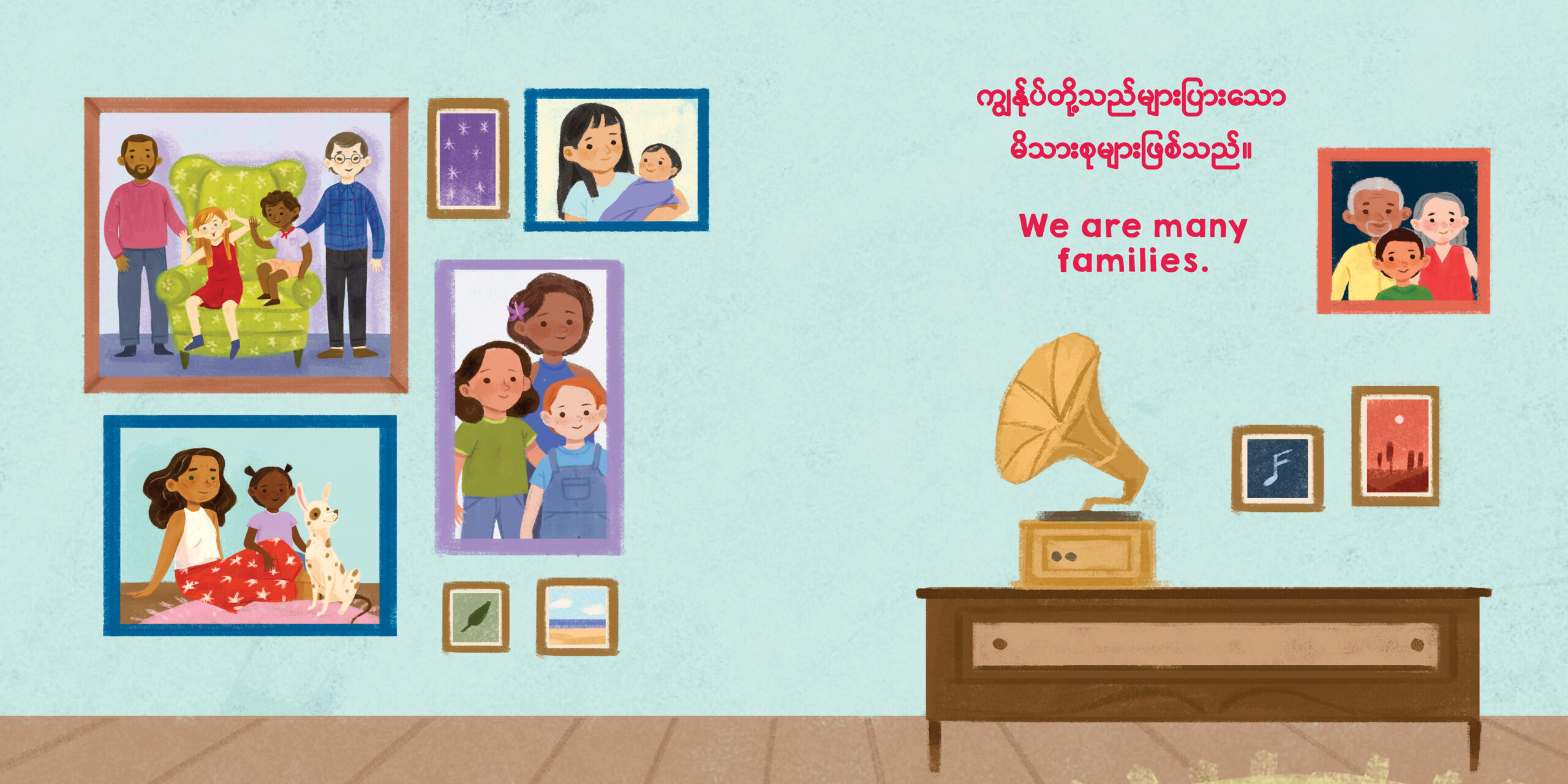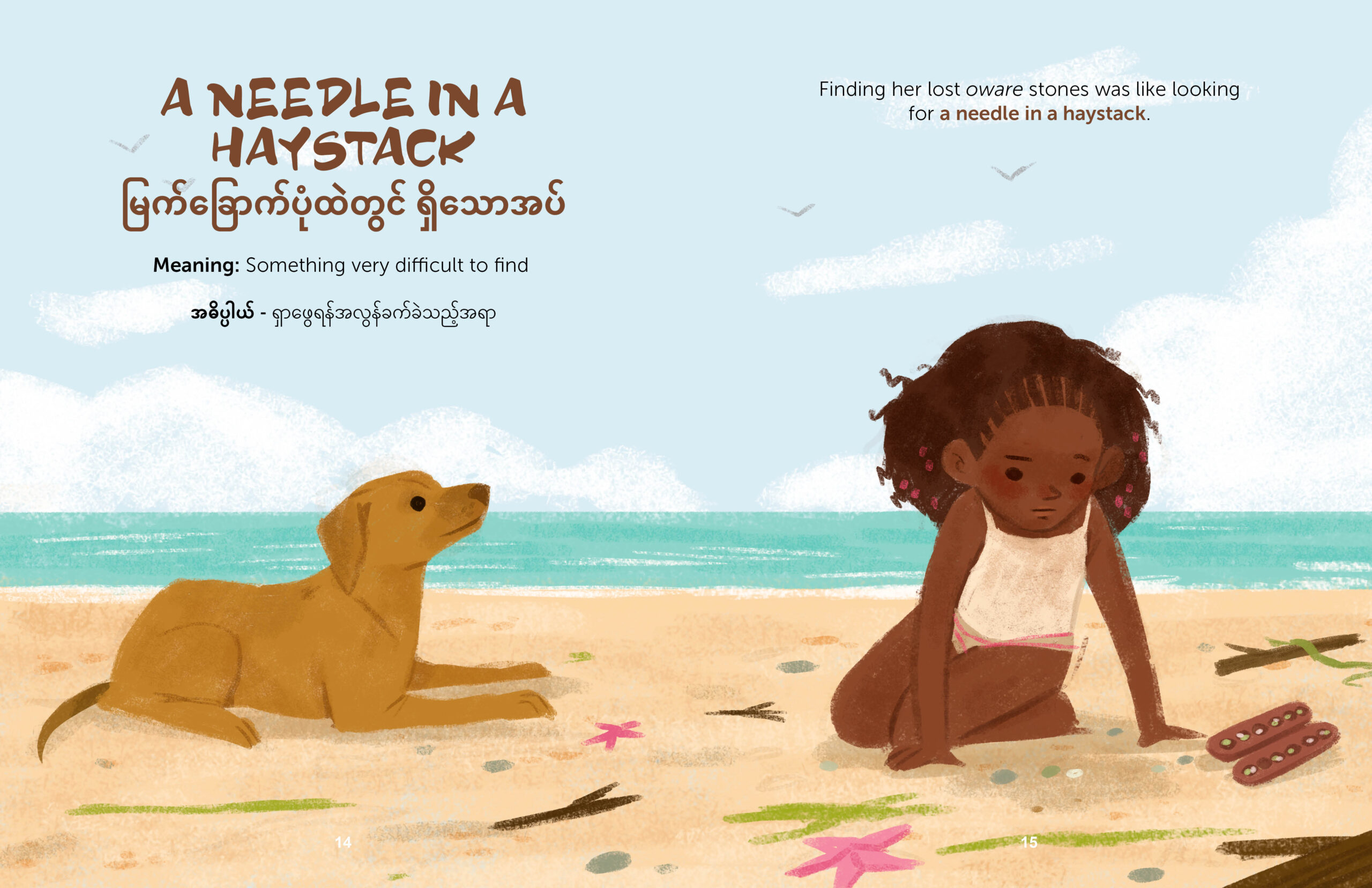 Image from The Three Little Howlers
Image from The Three Little Howlers
Let’s learn about the Burmese language! We’ve gathered background information and interesting facts about the language. In addition, check out our newest bilingual children’s books available in Burmese.
Where is Burmese spoken?
A Sino-Tibetan language, Burmese is predominantly spoken in Myanmar (formerly Burma), where it is the official language. Burmese is often called “Myanmar” because it is shared as a common language by the majority of the population of Myanmar.
Outside of Myanmar, there are native Burmese speakers in Bangladesh, Malaysia, Thailand, and the U.S. Globally, about 43 million people speak Burmese.
Burmese in the United States
Approximately 100,000 people speak Burmese in the United States. There are large Burmese populations in Indiana, Los Angeles, and Minnesota.
 Image from Who Are We?
Image from Who Are We?
Interesting Facts About Burmese
The Burmese language is written in a syllabic script adapted from southern Indian script. There are 33 consonants and 12 vowels in the Burmese alphabet.
Burmese was traditionally written using palm leaves; the letters are rounded because drawing straight lines would tear the palm leaves. In addition, Burmese is written with no spaces between words.
The Burmese language depends heavily upon intonation. Tone and pitch change the meaning of a word.

Image from Fresh As A Daisy: English Nature Idioms
Burmese Books – Bilingual Children’s Books
If you interact with children who speak Burmese or are learning the language, you may want suggestions on some of the best bilingual children’s books. Language Lizard offers many books with English and Burmese text that will appeal to readers of all ages. Some popular book sets include our Living in Harmony series, which discusses universal themes of kindness and respect while learning about new cultures. There is also the World of Stories collection that offers adventures set in diverse cultures around the world. Finally, don’t forget the Idiom Book Set, which explains common English idioms in a way that makes them easy to understand with clever illustrations and example sentences.
Are you interested in learning about other languages as well? View our Language Spotlight series on world languages, including Kinyarwanda, Tigrinya, Hmong, Cherokee, Hindi, Dari, and Pashto!
